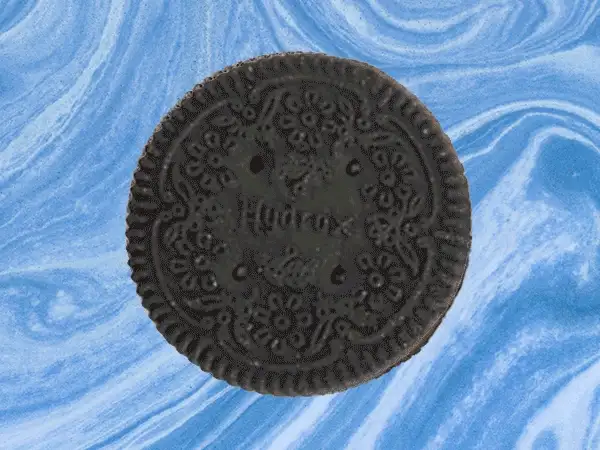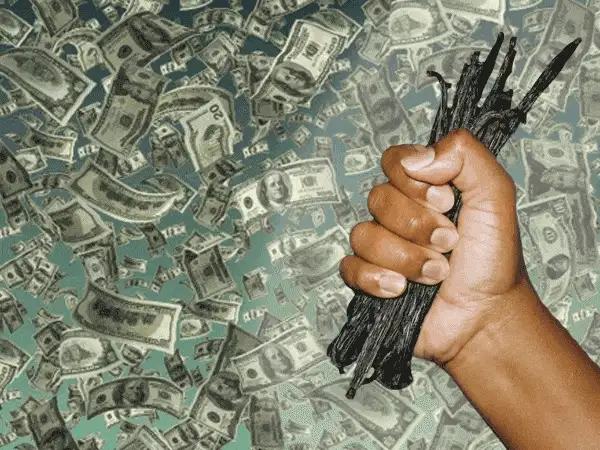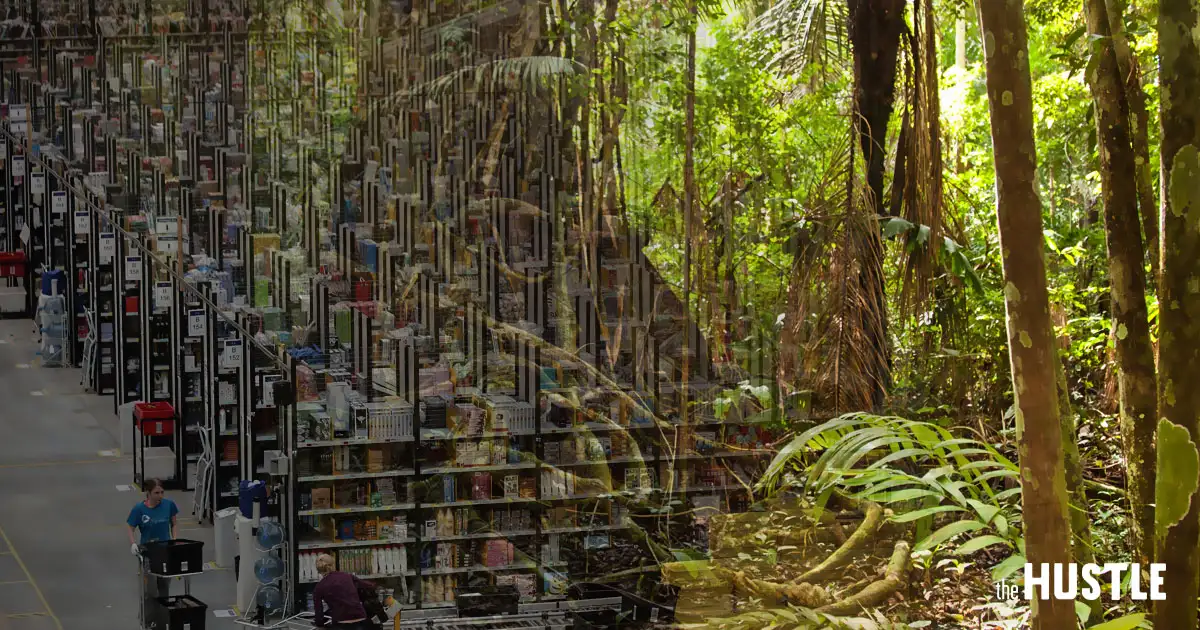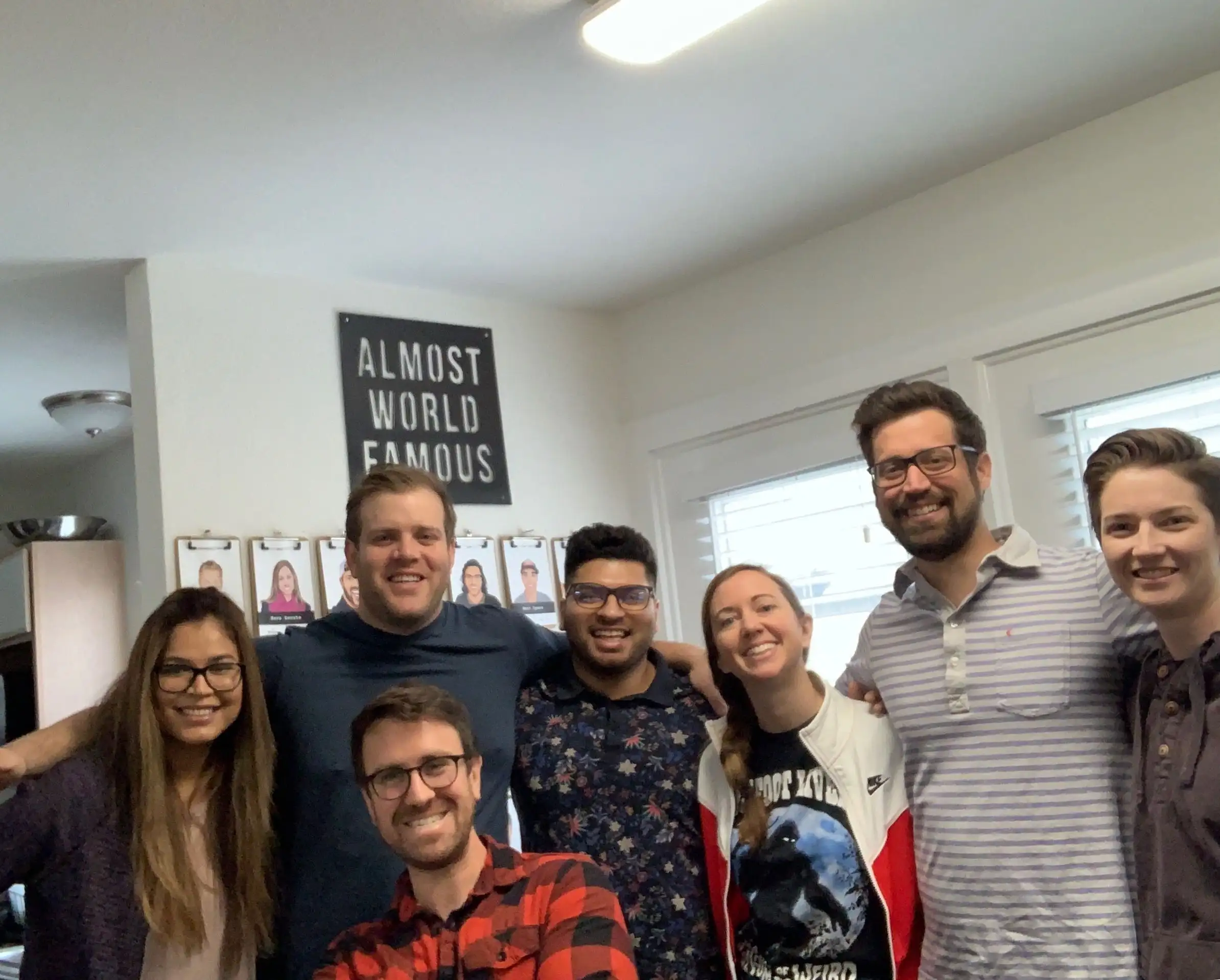EDITOR’S NOTE: SUTRA has moved on from pre-sales to officially launched, and is currently shipping to customers in the US and Canada. Visit SUTRA, your healthy coffee alternative, to learn more.
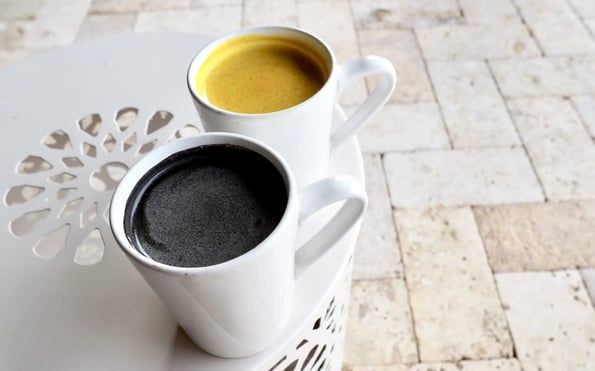
Five years ago I walked into the Emergency Room at the local hospital with trouble breathing, hyper-anxiety, and loss of balance. I was drinking too much coffee, and it was making me sick. It was at that moment that I quit, cold turkey, with the withdrawal migraines and everything.
Since then, I’ve been looking for a coffee alternative that would fill the void, and when I couldn’t find it, I went out and created it. Here’s how we went from idea to physical shipped product in 3 months to create our superfoods blend, SUTRA.
Getting Started
My girlfriend Ashley is a bit of a health enthusiast, so she knows all about superfoods and homeopathic remedies. She has chronic Lyme disease and it can get pretty bad. She gets heavy metal poisoning and needs to go through crazy detoxes and sometimes chelation therapy where they literally clean her blood.
I myself have Colitis, a small intestines disease. I’ve been taking Turmeric since I was diagnosed at a young age, since my mom, a 35-year veteran yogi, was also very much into eastern medicine and homeopathy.
Ashley and I had spent a few months trying products and looking into alternative companies. She was doing some Instagram marketing consulting and came across a Turmeric Latte company. We tried some and I thought, okay, if they fixed a few things this could have some real legs!
I already run a successful media company, so naturally, I did what any CEO of a good cash flow business with little time on their hands would do. I offered to buy out the other company. It was a small operation. One guy with a few contractors and an industrial kitchen that he rented a part of. It was his side project too.
After a few calls and emails, I offered him $50k for 70% of a business that really had nothing proprietary, and no debt. All they had were some monthly sales, and ability to turn out product quickly until I could build out a real supply chain. To my amazement, he turned it down.
So like a dog with a bone, I said fine, let’s figure this thing out ourselves then. It’ll take some luck, and some timing, but like any good business it’s all about passion, persistence, and persuasion.
Here’s how it took us three months and $20,000, from idea to having a physical product ready to ship. It’s not as easy, not as cheap, and not as quick as a tech minimum viable product, but it’s doable. Having a physical product that you can hold gives you a different type of fulfillment that I’ve never felt before. Enter, SUTRA Superfoods.
How we went from idea to product in 3 months.
The first thing we needed to do was figure out our formula. The existing turmeric beverages all had their ingredients on the backs of their bags, so we had a starting point. We ordered all of the turmeric beverages we could find.
There were some things we didn’t like about their formulas like some were too sugary, too peppery, or too spicy. So much so that we actually had a negative reaction from one of the products using too much cane sugar. Others had ingredients that didn’t dissolve properly. It’s also important here to use products you know will be easy to order in bulk, and won’t fluctuate on price too much.
I went to Amazon and ordered a gram scale that weighed to the hundredth. Then after a series of Google searches found some powdered ingredient suppliers. We ordered boxes and boxes of ingredients to play around with. Our idea went from just one turmeric beverage to a line of healthy superfood based coffee alternative beverages.
At one point I think I counted over 30 – 1lb bags of ingredients in our kitchen. I felt like Walter White from Breaking Bad. We tried for hours per day, for the first few weeks to nail the flavor profiles and color drinks we wanted. Turmeric was chai/gold. Charcoal was hot cocoa/black, then we wanted to do Spirulina for green and Beet for red, but just could find the right flavor profiles for them yet. We even spoke to food scientists to see what foods typically went together, or complimented other flavors.

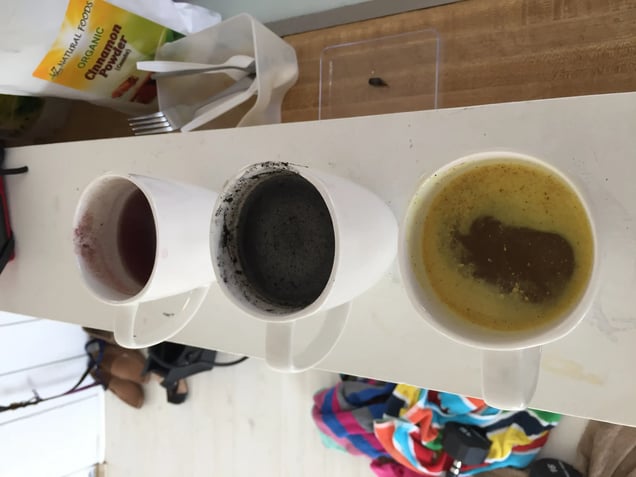
We’d have people over and give it to our neighbors to try. We wanted to make sure we received feedback from different types of personas that fall within our customer profile.
Once we locked in a flavor profile for Gold and Black, we logged variations in a spreadsheet of how much of each ingredient we put into each batch. We made sure we solved the issues we saw in the flavor profiles and low-quality ingredients that others in the space were using. Some ingredients like Cayenne Pepper, for example, adding even an additional .01 could change the flavor completely. It was tedious and time-consuming, but worth the effort.
We had two formulas we were confident we could go to market with as a coffee alternative. Having a girlfriend who is super passionate and knowledgeable about this was a huge help here.
While we were figuring out the formula, serendipity kicked in. A buddy of mine, Matt, a partnerships/sales guy from the NY tech scene called me looking for his next career move. We knew each other through the tech sales space, but he had no idea what we were doing with SUTRA.
He recently started battling heavy metal poisoning himself and was using superfoods and eastern medicine in his healing. So when I told him about the business, he wanted to get involved. We needed someone who could be on the ground selling to coffee shops, but we couldn’t pay him until we had product. The timing just happened to work out in our favor, and he was in.
Now that we have a coffee alternative formula, what’s next?
I set off to figure out the entire supply chain. Here are the elements we needed, and in the order we needed them.
- Legal Formation – LLC and Bank Account
- Bulk Ingredient Suppliers
- Branding / Packaging Design
- Bag/Box Packaging Printers
- Co-Packer for Q&A/Ingredient Blending/Bag/Box Filling
- Third Party Logistics (3PL) Provider to fulfill orders from the warehouse to customer
- Website / Direct to Consumer and B2B Sales / Marketing Plan
Holy shit. Where to start?
The first one is easy. LegalZoom does the Delaware LLC work and a bank account from any local bank will work. Total cost, about $350. But now what?
We went back to our ingredient suppliers from earlier to make sure they could ship all of our goods in bulk, in the time frame desired. We had to convert the individual sticks from grams into pounds, then account for 3% lost product in the mixing process. Our spreadsheet looked something like this,
| Run 1 Ingredient Order – 50k sticks | Pounds | Pounds + 3% Buffer | Pounds to Order | Price (COGs) |
| Turmeric | 10.3 | 10.33 | 11 | $450.00 |
| Stevia | 3.4 | 3.43 | 4 | $51.00 |
| Coconut Powder | 12.5 | 12.53 | 13 | $391.00 |
| Ginger | 4.67 | 4.7 | 5 | $23.00 |
| Vanilla | 7.6 | 7.63 | 8 | $100.00 |
| Black Pepper | 3.84 | 3.87 | 4 | $27.00 |
| Salt | 15.6 | 15.63 | 16 | $35.00 |
| Cayenne | 19.6 | 19.63 | 20 | $46.00 |
| Red Maca | 22.1 | 22.13 | 23 | $32.00 |
| Cinnamon | 44.5 | 44.53 | 45 | $74.00 |
| Activated Charcoal | 6.2 | 6.23 | 7 | $35.00 |
| Red Reishi | 14.3 | 14.33 | 15 | $140.00 |
| Cacao | 15.6 | 15.63 | 16 | $145.00 |
| $1,549.00 |
*Real numbers are hidden. This is for example only.
We got the go-ahead from our suppliers, which we were able to take down from four to two. We also had to make sure we had relationships with others just in case. We also negotiated on pricing and got discounts where we could. I’ll go into this later.
Next, we had to decide on what packaging to do. We ordered a bunch of products from these trendy new matcha and collagen brands to see what looked and felt good. Some did stick packs, others did sachets. After opening and testing them all ourselves, we thought stick packs would be the best look, feel, and overall user experience when pouring the powder. The size just depended on the co-packer’s machinery which we find out later in the process, but the difference would be millimeters.
After we knew the product and the packaging we wanted to create, we need to attack the branding project. We didn’t even have a name in mind. Fortunately, in my network of tech founders, I was able to get in touch with a few physical product founders. I received an intro to a branding company in the US. They were based in Brooklyn and quoted us $16,000, which is more than our first run of product cost us. So we went over to handy Upwork and found a company in Argentina to do all of our naming, logo, branding, and packaging work for $4,000.
They came up with ten names. Honestly, I couldn’t tell you what most of them were. Don’t give this part of the project to a branding agency whose first language is not English. One of the names we semi-liked was Bru. After stewing on it for a few days, it still felt off.
On the way home from the gym, I was thinking about our tagline. Your Superfood Tradition. Su – Tra. SUTRA. It’s an ancient word, with real meaning closely aligned with our product and values. Ashley, Matt, and I agreed that it made too much sense. After a few trademark searches for both our operating and incorporating states and the trademark class we were in, SUTRA was officially born. From there, the branding team was able to do great work on the rest of the project.
Outsourcing to Argentina was a big risk but paid off for us financially. It just took a little longer than we would’ve liked, which was ok because…
Our original branding company that quoted us $16,000 was still nice enough to intro us to a bag/box printing company. The bag/box printer introduced us to two different Co-Packers. This is where shit hit the fan.
The two co-packers were both incredibly unreliable. The problem for us was that our run order was below the minimums. I didn’t want to take too much risk, so we didn’t want to run more than 50,000 stick packs, 25,000 of each version. Most places have a minimum run of 500,000 stick packs. That’s 10x more in upfront costs (likely into the six figures), and that doesn’t even include warehousing and shipping, etc.
So we were stuck with these really unreliable vendors. We went back and forth with them, waiting on them for about 6 weeks while our branding was being finalized. I was anxious to get the business started but still had a full workload from Sales Hacker on my plate. I was out in Europe for our Sales Hacker London conference and then had planned travel around Italy for a few weeks.
In week 5 of the waiting game, the co-packer that was somewhat responsive was supposed to run a test for our product. It was supposed to happen on Monday. Then it was pushed to Thursday. Then the next Monday. Then on that Monday, I received an email saying they didn’t have enough employees and they can’t get any of their runs done in time. The big lesson here: If you would fire someone you haven’t started working with yet, don’t work with them!
At this point, I was fed up but had no other options. So from Italy, I started calling and emailing every co-packer I could find on the internet. I finally found one that could do our minimum run and do it fast. Even better, they work with another up and coming startup in the space that we know of and is non-competitive to us.
They covered the bag/box printing for us too, and in 6 months would be able to act as our 3PL (warehousing, shipping to customers). This is definitely where we got some luck.
Within a week I knew these guys were the real deal. It was the first week of October and we were back on track. A few weeks later I was in Utah to speak at a sales conference, and I was able to meet the co-packers and see the facility.





*Facility, V1 packaging, and final packaged product for SUTRA
I needed to find a 3PL for the next 6 months now. So I went back to my good friend Google and called and emailed until I found a good one with someone who was very responsive.
I negotiate on everything, so this is where you really need to dig in. Push back on every cost, especially ones that affect your margins. Your margins consist of everything from ingredients, to materials, to print, to blend, to package, to shipping/warehousing, and customer shipping.
It does not include overhead like business operations, office space, etc. Acquirers really care about margins because when they buy you they’ll already have the rest of your operations in-house and covered. 70-80% is a great range to be in. Every fraction of a cent counts, so push back hard on everything.
For this, I keep a spreadsheet that looks like this,
| 50k Sticks | Price per stick (10) | Price per stick (30) |
| Printing/Materials/Blending/Packaging – Co-Packer | 0.1384 | 0.1384 |
| Ingredients/Shipping – Bulk Suppliers | 0.05428 | 0.05428 |
| Manufacturing Total | 0.19268 | 0.19268 |
| Total Cost of 10/30 Packs | 1.9268 | 5.7804 |
| Shipping to 3PL | .02 | .02 |
| Custom Boxes LxWxD | 1.32 | 1.32 |
| 3PL Pick & Pack Fee | 1 | 1.75 |
| Promo Insert Cost | 0.05 | 0.05 |
| Shipping to Consumer Cost | 2.5 | 3.2 |
| Logistics Total | 4.89 | 6.34 |
| What we’re charging the consumer for shipping | $2.99 | $4.99 |
| Difference between what it costs to ship and what we’re charging (costs more than we’re charging) | $1.90 | $1.35 |
| Total Cost of 10 Pack / 30 Pack | $3.83 | $7.13 |
| Sale Price | $20 | $40 |
| Price per stick | $2 | $1.33 |
| Margin | 81% | 82% |
| Lowest price with Subscription Discount (20%) | $30 | |
| Price per stick | $1 | |
| Margin | 76% |
*Real numbers are hidden. For example only. However, margins are similar.
This is also important because you’ll be spending a lot to acquire customers. Like a tech company, understanding your Customer Acquisition Costs (CAC) and Lifetime Value ( LTV) or Average Revenue Per User (ARPU) or in this case, customer, is really the only thing you need to understand. Many companies in the space make their money by giving affiliates 20% to promote their products, so your margins need to be very healthy from the get-go. The good news is, the more your order and sell, the better your margins will get.
While we were doing this, Ashley was busy building the site and getting her influencer marketing plan in place and Matt was out building lists, sales collateral, and the overall sales strategy with me for wholesale. This is what their day jobs were before we started the business, so they know what they’re doing here.
Marketing
First, we needed distinct profiles for e-commerce:
- Tech employees and entrepreneurs who have 4+ coffees a day
- Healthy corporate professionals who party on the weekends but balance it out by being healthy Monday – Thursday
- Tired parents and adults who are hurting from lack of sleep and looking for a coffee alternative
- Millennials who want Instagram-worthy photos and love to try trending products
Once we were in agreement on our target market, Ashley went to work at creating the following marketing elements:
- Website – We used Shopify and recommend it to anyone starting out. It is very user-friendly and if you know how to work an iPhone, you can build yourself a site.
- Images – We made sure to have a mix of lifestyle photos (flat lays and people) and product shots (a full mug with a simple backdrop).
- Content – It was important to us to create simple homepage verbiage, product descriptions, and blog posts. We researched the best keywords, URL’s, and headings for SEO ranking.
Sales
When formulating a wholesale strategy, Matt had to identify our ideal customer profile. First, he established that cafés and restaurants were the best places to start, given they’re already selling hot beverages and could be looking for another coffee alternative. The majority of these places in NYC are small businesses, with relatively easy access to decision makers. This lends well to short sales cycles, which is important if you need to generate revenue quickly in order to cover the production costs required to fulfill wholesale orders.
Although selling to large retailers is an integral part of our long-term plan, it wasn’t a top priority at first, given the sales cycles are elongated. We needed initial traction with SMB’s to leverage when selling to big names like Whole Foods, Westside Market, etc.
After identifying a general ICP, it was time to refine his approach. He conducted online research and built a list of top prospects that would not only stock our product but have the potential to sell it quickly. He looked for businesses that were heavily trafficked with customers who were in line with our e-commerce buyer profiles. Craft coffee shops and trendy brunch-centric restaurants were an obvious choice.
Once his prospect list was complete, he constructed our sales pitch and built a compelling deck that he would show to prospects once he began outside selling. The deck was structured as follows:
- Our Story – tell the story of how our founding team all battled chronic illness and was healed due to the superfoods we use in our products
- Our Products – highlight our two main products and their quality standards
- Benefits – outline each ingredient in our products, along with their physical/mental benefits
- Trends – speak to trends that validate the need for a product like SUTRA
- Why SUTRA? – articulate why a business would want to sell our product
- Pricing – outline basic details, including cost per serving, suggested retail price, and gross margins
Finally, we had to choose a CRM geared towards SMB sales. Ultimately, we chose Pipedrive because it was cheap and easy to use.
While developing a sales strategy is important in the early months of a company, execution is paramount. Matt had to be on the ground pre-selling SUTRA, asking questions and handling objections, to truly build a repeatable sales process. Every day he mapped an outside sales route that would allow him to physically visit 25 prospects. He would enter the stores, ask for the decision maker and would either meet them on the spot or acquire their contact info. If the decision maker was present and had time, Matt would provide samples and have them try the product. If they weren’t able to test the product, he would schedule a time to meet when they could.
After touching all of his daily prospects on foot, Matt would spend the remainder of his day inside selling. First, he would add all new prospects to our CRM, create notes and schedule an activity. These activities consisted of following up with a DM he had met or cold-emailing those he had received contact info for. Overall, he split his time 50/50 between outside and inside sales. The main goal was to add as many prospects to the top of the funnel as quickly as possible. These initial touch points helped us to rapidly refine our approach so we could optimize our sales cycles and start closing deals, which in turn allowed us to make our first wholesale order.
Lastly, why not pre-sell the sticks?
We thought about funding the whole thing through pre-sales via Kickstarter or Indiegogo. The reason why we didn’t was that it didn’t play to our strengths.
Ashley handled the marketing. Matt does sales. I already have the upfront cash. If we went the pre-sale route, we wouldn’t have been able to use influencers for it, as they wouldn’t be able to have product first.
I also had the cash to lay out, so I’d rather do a hard launch with all of our resources when we have product ready and hit the ground running with momentum, then to do a big launch, hit our funding goal, and then not have product for 3 months. That would kill any momentum from the pre-sale, making it necessary to try and ramp twice. That’s hard, and could be more than double the effort.
Key Takeaways
- Google is your BFF
- Every cent counts when thinking through margins
- Talk to people outside of your sphere to validate the product
- Find vendors who really want your business
- Do this for passion first, fun second, profit third, otherwise just do tech

*Finished product – SUTRA Black and SUTRA Gold
Follow us on Instagram @SipSUTRA
*Max Altschuler is the CEO of SUTRA, a healthy alternative to coffee. He also runs Sales Hacker, the leading B2B Sales community and media company, and is the author Hacking Sales, published by Wiley.







